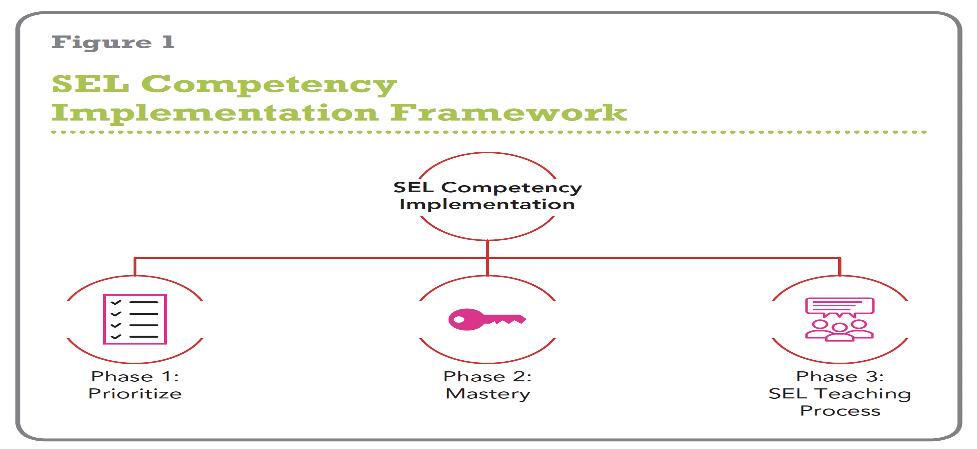The 'L' in SEL Stands for Learning

Learn More About
LETRS for Early Childhood Educators
It’s safe to say we are confronting a difficult time in education. The COVID-19 pandemic and civil unrest has rocked the core of our nation and our educational system as we know it. As a result, students are struggling with anxiety, loneliness, depression, motivation, engagement, feeling numb and overwhelmed; hence the justification for having Social and Emotional Learning in schools. Specifically, students need to understand the relationship between their emotions and behaviors and acquire the SEL tools needed to access their learning and life. This should without a doubt be a top priority and integrated into the fabric of any school, in any setting. This need for SEL is supported by an abundance of research about the benefits of SEL in schools:
- Improved academic performance
- Improved social behaviors
- Lower levels of distress
- Improved attitudes
- Improved social interactions, and
- Fewer conduct problems (Durlak & Mahoney, 2019).
If we know SEL in schools is needed now more than ever to help our students and that the science behind SEL reveals benefits for our students, then we need to ensure the “L” in SEL (learning) is taking place. While this isn’t easy to do, it is worth the effort.
As educators, we do a great job of identifying the absence of specific academic skills impeding a student’s ability to succeed in a particular subject area and providing targeted instruction to ensure learning. For example, a nonfluent reader needing additional support with vowel blends and digraphs; or a student not able to recall basic math facts, procedures, rules, or formulas hindering their success in math. However, when it comes to behavior, whether academic or social behaviors, it’s met with frustration and labels are suddenly attached, such as “acting out, being disruptive, or being lazy.”
Why is it that our focus shifts from a student demonstrating gaps in learning based on the absence of a specific skill, identify, and teach those skills to get that student back on track with reading or math; yet when we identify students demonstrating specific behaviors (academic or social), we don’t view it as a student needing the necessary instruction to learn a specific SEL skill to reduce or eliminate those undesirable behaviors? Schools need to provide the same systematic teaching of SEL skills as we do to support students who struggle academically.
Our analysis of SEL in schools throughout the nation yielded positive tools and processes for teaching SEL in schools in any setting. Subsequently, our analysis also revealed an opportunity for growth in the intentional teaching of SEL competencies. As a result, we developed the SEL Competency Implementation Framework to help address this need. The SEL Competency Implementation Framework is divided into three phases 1: Prioritize 2: Mastery and 3: SEL Teaching Process, and is designed to ensure the “L” in SEL.
 Hannigan & Hannigan, 2020
Hannigan & Hannigan, 2020
Phase 1: Prioritize. Prioritize the SEL competency and related skill(s) of focus based on data and stakeholder input and needs.
Misstep to avoid: Avoid teaching SEL competencies solely based on a scope and sequence from a prepackaged SEL curriculum. For example, if the need to teach students how to demonstrate empathy is now based on student data, do not wait to teach it until March because that is when empathy is scheduled.
Phase 2: Mastery. Develop a rubric for mastery of the priority SEL competency and related skill(s) of focus based on data and evidence indicators.
Misstep to avoid: Ensure you are clear about what mastery looks like for the SEL competency you are planning to teach. If there is no clarity about what mastery looks like, there will be inconsistency of students demonstrating proficiency for each skill.
Phase 3: SEL Teaching Process. Embed the priority SEL competency and related skill(s) into the SEL Teaching Process: identify, teach, model, and reinforce.
Misstep to avoid: Teach in multiple modalities over time to ensure mastery for the various learning profiles of students. Model what you teach and give students opportunities to model their learning. Do not forget to reinforce their learning with positive praise and interactions.
Follow these phases and you will see the benefits of SEL come to fruition at your school. In our book SEL From A Distance: Tools and Processes for Anytime, Anywhere, we provide educators the processes and tools to ensure the “L” in SEL. View our webinar, with host Andrea Samadi and guest Dr. Lucy Hart Paulson, to learn more about how to build a SEL framework in your school/district.
